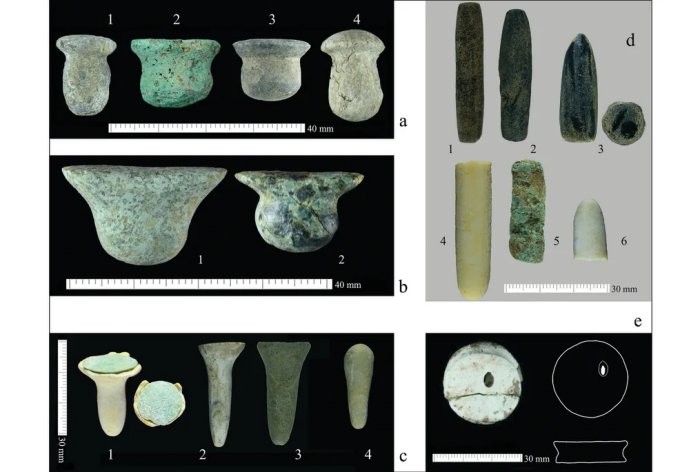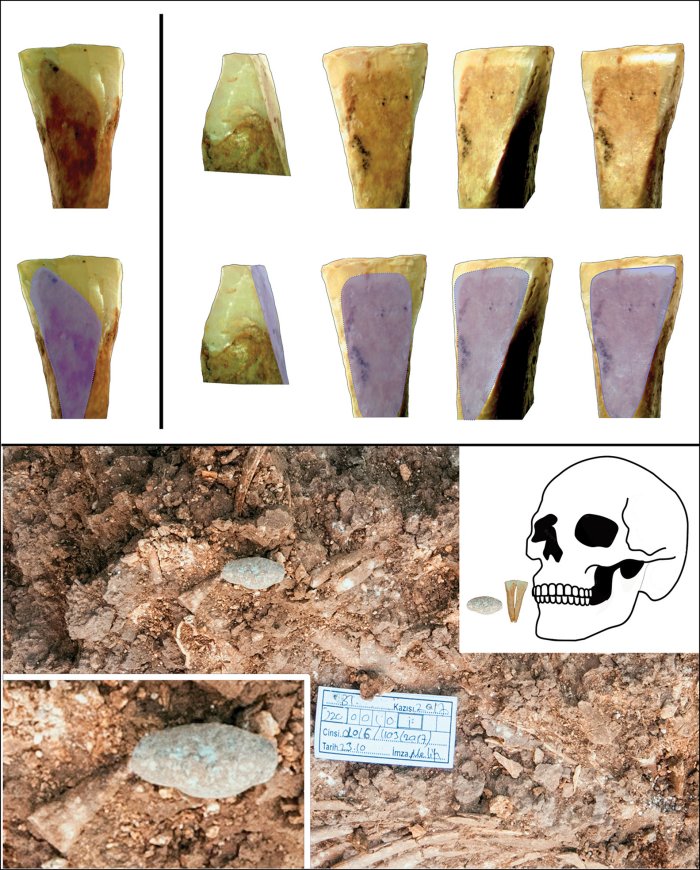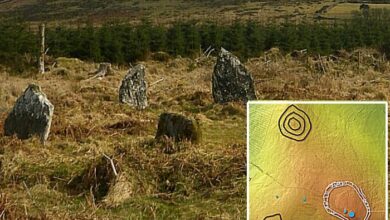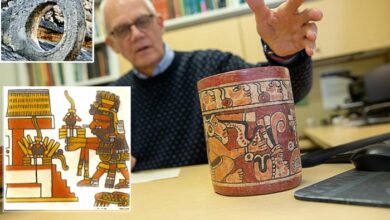Evidence Of Stone Age Ear and Lip Piercing Found At Boncuklu Tarla Neolithic Site In Türkiye
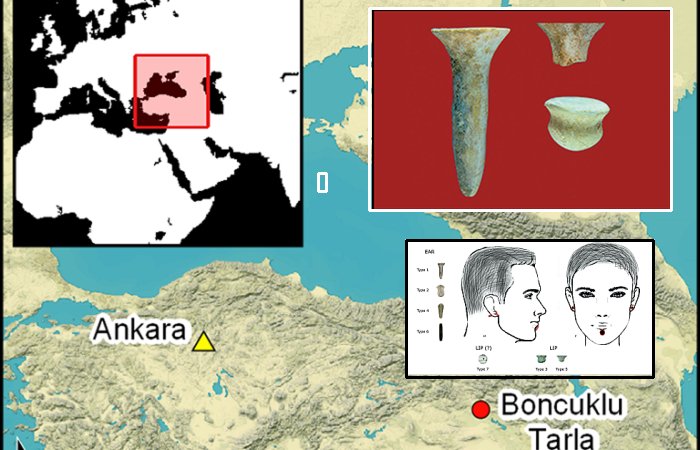
Conny Waters – AncientPages.com – More than 100 ornaments buried in ancient graves dated to about 11,000 years have been unearthed by archaeologists from Ankara University.
These artifacts are very unique stone earrings and were excavated at the at early Neolithic archaeological site Boncuklu Tarla in southeast Türkiye.
Boncuklu Tarla was discovered in 2008 during a field survey. Its first excavations started in 2012, and many discoveries have been made since then. To date, more than 100,000 ornamental artifacts have been excavated. The finds represent the earliest evidence for the use of body augmentation requiring perforation of bodily tissue in South-west Asia.
These stone earrings were used to perforate the body in rites of passage and symbolized the transition of a young person into adulthood. If there is more in this very ancient procedure, it remains a mystery.
“While beads and pendants are common in the burials of babies and children, ear and lip ornaments are not; at Boncuklu Tarla, labret-like artefacts have so far only been found in association with adults – suggesting that ornamentation practices varied according to age,” according to the paper.
Examples of seven types of labrets found at Boncuklu Tarla that were used as body piercings: Type 1: c1–3; Type 2: a1 and a4; Type 3: a2 and a3; Type 4: c4; Type 5: b1 and b2; Type 6: d1–6; Type 7: e. Emma L. Baysal
Researchers state that artifacts were found around the ears and chin of the skeletons. The variety of shapes and places of discovery in situ indicate that both ears and lower lips were pierced with them. The ornaments are made primarily of limestone, but also of river pebbles.
Some of them were also made of obsidian, which in ancient cultures was believed to be a magical artifact.
“We knew that there were earring-like artifacts in the Neolithic, they have been found at many sites,” says co-author of the research, Dr. Emma Baysal from Ankara University. “But we were lacking in situ finds confirming their use on the human bodybefore the late Neolithic.”
At Boncuklu Tarla, the researchers were finally able to recover a number of labrets from their original grave contexts, despite that many were found destroyed by rodent activity, mainly in multiple burials.
Those undisturbed – a good material for further investigations – were lodged either on the upper or lower surface of the skull or beneath the lower jaw.
Illustration of hypothetical use of the PPN labrets and ear ornaments at Boncuklu Tarla (figure by authors).
Researchers found their connection with the head and sometimes even traces of signs of wear from labret use. The presence of different types of labrets in lips and similar adornments in ears, along with tooth wear caused by labrets, largely supports the theory that various kinds of ornaments were employed to push the limits of bodily boundaries.
There are currently 106 examples of ornaments intended for use in body perforations, 85 of which are complete and made from a variety of raw materials.
Most common materials are limestone, obsidian and assorted river pebbles.
There are more than 3500 copper items of ornamentation at Boncuklu Tarla. All of the copper labret-like and ear ornaments were made from pieces of native copper that were cold worked, often treated like stone. The material is unlikely to have had any health-related side effects other than the possibility of allergic reaction.
Grave 2017/103, PPNA: a type-5 labret example from inside the mouth (inset illustration). Top half of the Figure shows labial wear on the lower incisors of the individual caused by habitual adornment with the labret (photographs from the Boncuklu Tarla Excavation Archive, figure by authors).
However, lip and ear decorations can lead to lasting body changes, sometimes even outliving the ornaments themselves. The physical adjustments needed for their use, coupled with the related discomfort, often link these body piercings to adulthood.
They’re seen as a sign of maturity and social standing.
The use of a labrets in a practice involve significant and potentially permanent alteration of the body that may outlast the use of the ornaments themselves. Body piercings, often requiring physical adaptation and sometimes causing discomfort, are typically seen as a sign of adulthood, reflecting maturity and social standing. The impact of such body decorations can be profound, signaling sexual or social maturity and status or even denoting group or ethnic ties.
Those who choose not to adorn their bodies in this way may be perceived as outliers or potentially threatening.
“In certain contexts, however, labrets are also seen as aiding in strength, aggressiveness and even the ability to speak or hear. Additionally, they are also used in the communication of identity and economic status,” the paper states.
Written by Conny Waters – AncientPages.com Staff Writer


